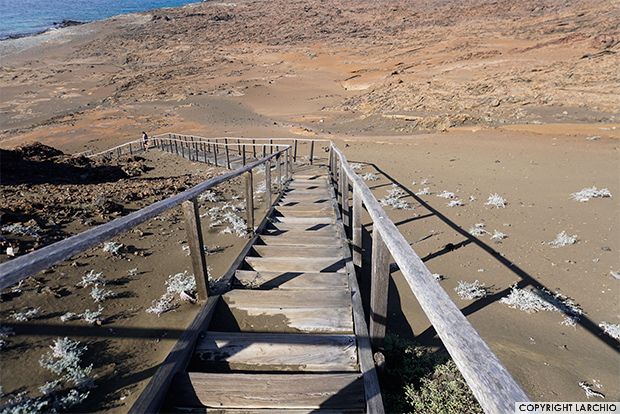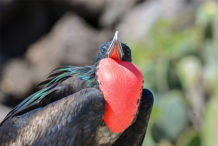Galapagos Island Family tours
Seeking the most trusted Galapagos tour operator? Travel with GalapagosInformation.com. Highly recommended in LonelyPlanet. Enjoy the greatest traveling experience of your life. The top rated company, multiple alternatives, high level accommodations, properly trained guides. All Inclusive trips, every month of the year. Book right now. Galapagos Island Family tours.
Visit Galapagos Islands Ecuador can be a truly Eden, among the most extraordinary wildlife worldwide is located on the Galapagos Islands. A journey to the Galapagos is the excursion of their lifetime for the majority of people. The wild animals in Galapagos that you will see can’t be found in other regions, but in this place sea and land creatures and wild birds are more approachable.
You may see Boobies, giant tortoises, iguanas among others, will be found definitely nearby in your adventures. If you love snorkeling or diving, sea lions will be playing with people and also underneath them, turtles and tame sharks could be encounter.
When is a good time to visit the Galapagos?
There are two seasons: December to May is hot and wet and June to December is usually dry and cool. Annual rainfall in the lower regions is 2-4in and the air temperature can vary around 69°-84°F/21°-29°C.
The islands’ climate is dependent on ocean flow. The sudden climatic transformation a result of El Niño is often devastating: as many as 50% of sea lions and marine iguanas could pass away through this period.
The convergence of 3 significant oceanic flow brings an incredible mix of ocean life to this islands. Even being situated in the tropics, the Galapagos micro-climate is surprisingly dry. During the cold season, the Humboldt Current produces very cold water, which usually creates thermal inversions that impede precipitation.
At this time, a fine mist known as “garua” is formed as cold, humid air just over the waters meets a higher layer of air that is warmed up by the warm sun.
‘El Niño’ can be described as a rare event that happens approximately every 5-7 years. The south trade winds slacken and cause the marine temperatures to increase significantly and cause stormy weather and rainfall.
The Galapagos were discovered by chance in 1535 by Father Tomas Berlanga, priest of Panama.
Because of the long distances involved, the only sensible way to explore the Galapagos is by live-aboard boats, which traveling between islands, largely at night, and also make different stops every day. Over 80 boats are licensed to operate in the archipelago and there are an infinite number of combinations of stops and routes. Most cruises go ashore two times per day: 10 full days on the boat typically means 20 coast landings, 10-20 snorkels, and many panga rides (pangas are little, open outboard-powered boats) to about 10 different islands.
Exploring on your own is considerably harder. Getting around separately is catchy and all traffic should be accompanied by a licensed naturalist guide at all landing sites. However four islands (Santa Cruz, San Cristobal, Floreana and Isabela) have hotels of varying dimensions and criteria and a couple of boat operators offer day-trips.
Following in Darwin’s footsteps calls for a trip from Quito or Guayaquil, on the mainland, to Baltra or San Cristobal. Some cruises leave from Baltra (the pier is a five-minute drive in the air terminal). Other people go from Puerto Ayora, the tourist hub on Santa Cruz and a comparatively busy town, with a bank, ATM machine, taxis, pubs and even a theater.
GalapagosInformation.com provides an assortment of tailor-made live-aboard tours on a lot of different boats carrying from 4 to 16 passengers.
Wildlife activities differ, and each month has its highlights. For example, green turtles begin their own egg-laying in January; penguins socialize with swimmers on Bartolome largely from May until the end of September; humpback whales start to arrive in June; July through the end of September is the ideal period for many seabird action; peak pupping for sea lions is around August, while their pups play aqua-aerobics with snorkelers at November; and December is the month for hatching giant tortoise eggs. So, always there is something happening.
The seas are usually calmer and clearer at this time of year (with 60ft-80ft visibility typical) and the water temperature averages 79° F (26°C), therefore this period is ideal for snorkeling.
The cool, drier, windier season (with occasional drizzle or mist) is from June to November. Sea temperatures in the time of year fall to as much as 66F (19C) and visibility often goes to 30ft-50ft, while sea swells may make some landings tricky.

The most popular months for take a trip In Galapagos cruises are between June and August and again from the middle of December to January. Plan ahead if you wish to see during the peak tourist times. Visiting out of these periods will still offer plenty of experiences and wildlife experiences, but costs may be lower with fewer other tourists around.
With minimal variation in water and air temperatures throughout the entire year, and numerous species that aren’t migratory, an Isabela Island cruise is an excellent experience at any moment. Generally, but the waters are better between January and March, which makes this an ideal time for enthusiastic snorkeling enthusiasts. The driest months are typically between August and December, perfect for beach lovers.
Pay a visit to the Galapagos in January to observe green sea turtles coming and laying eggs on the beaches, and in April to find the eggs. July is the prime month for seeing whales off the western coast of Isabela Island. Bird spotters will probably prefer to see Isabela Island between August and March, when the range of migratory birds is at its peak. October is the breeding period for fur seals, whilst brown nodes are sexually active in November. December is the best month should you want to witness the hatching of giant tortoises.
Before joining any Galapagos cruises, you will initially have to make your way to mainland Ecuador. International flights usually arrive at the nation’s capital city of Quito, though it’s also likely to take an international trip to Guayaquil. Flights to the Galapagos Islands leave daily from both Quito and Guayaquil.
Galapagos Facts
A bunch of unfearful wildlife, visitors can get up close and personal to some of the world’s rarest animals. The convergence of three major oceanic waters flow brings an incredible mix of marine life to Galapagos. The endemic Galapagos marine iguana is known as the only lizard able to float in the ocean. Darwin’s study in Galapagos resulted in the groundbreaking theory of The Evolution of Species.
In 1978 UNESCO designated Galapagos as the first World Heritage site. The movie Captain and Commander was filmed around the islands of Bartholomew and Santiago. The title ‘galapagos’, a classic Spanish term for ‘saddle’, was originally employed by Bishop Tomas and his team to spell out the giant tortoises but the name stuck. Due to the early existence of both English and Spanish inhabitants in Galapagos, the Islands have both Spanish and English names.
Darwin sailed to Galapagos on board the HMS Beagle in September 1835, when he was 26 years old. During the five weeks that he spent there, he went ashore to collect plants, stones, birds and insects. He observed the odd life forms and their adaptations to the harsh atmosphere. He noted that it was possible to distinguish which island a tortoise came from by the shape of their shell. His most well-known study is of the numerous species of finches that prompted his revolutionary theory The Origin of Species, published in 1859.
GALAPAGOS CRUISES 2024
NEMO 3
| DEPARTURES | ITINERARY | AVAILABLE CABINS | SPACES | |
|---|---|---|---|---|
| There aren't available dates for the selected dates |
















